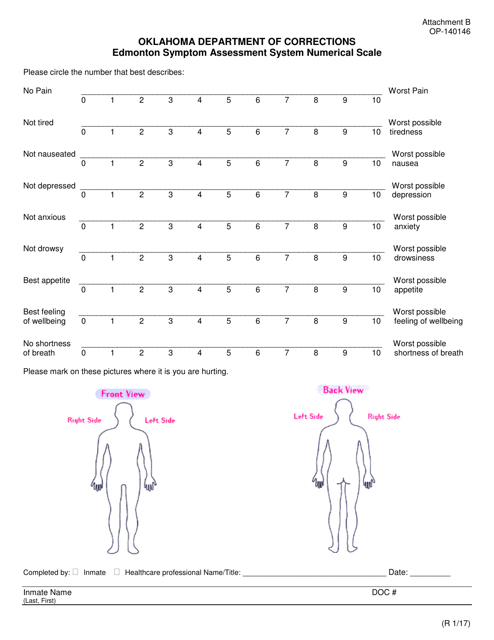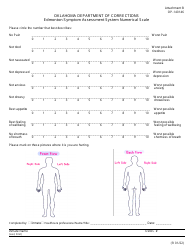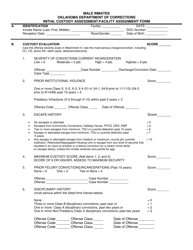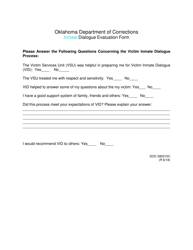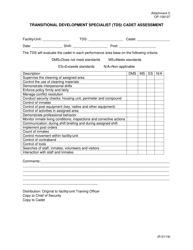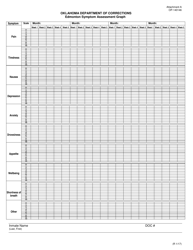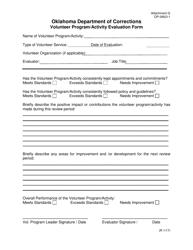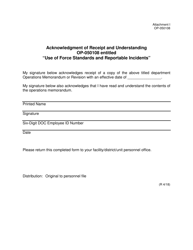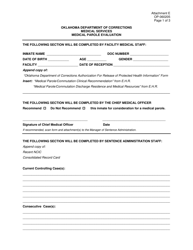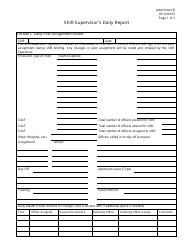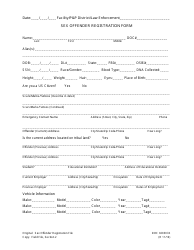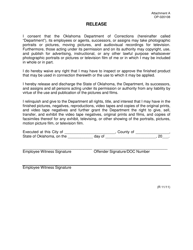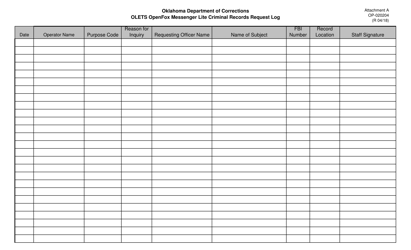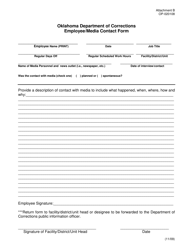DOC Form OP-140146 Attachment B Edmonton Symptom Assessment System Numerical Scale - Oklahoma
What Is DOC Form OP-140146 Attachment B?
This is a legal form that was released by the Oklahoma Department of Corrections - a government authority operating within Oklahoma. As of today, no separate filing guidelines for the form are provided by the issuing department.
FAQ
Q: What is the Edmonton Symptom Assessment System?
A: The Edmonton Symptom Assessment System (ESAS) is a tool used to assess the severity of symptoms in patients.
Q: What is the purpose of the ESAS?
A: The purpose of the ESAS is to provide a numerical rating for the severity of different symptoms experienced by a patient.
Q: What symptoms are assessed using the ESAS?
A: The ESAS assesses symptoms such as pain, fatigue, nausea, depression, anxiety, drowsiness, appetite, and shortness of breath.
Q: Is the ESAS a reliable tool?
A: Yes, the ESAS is considered to be a reliable tool for assessing symptoms.
Q: How is the severity of symptoms measured using the ESAS?
A: Symptom severity is measured on a scale from 0 to 10, with 0 indicating no symptom and 10 indicating the most severe symptom.
Q: Who uses the ESAS?
A: The ESAS is used by healthcare professionals to monitor and manage symptoms in patients, particularly those with advanced illnesses.
Q: Is the ESAS specific to a particular illness?
A: No, the ESAS can be used to assess symptoms in patients with various illnesses, including cancer and other advanced diseases.
Q: Is the ESAS used in Oklahoma?
A: Yes, the ESAS is used in Oklahoma as part of the Oklahoma Palliative Care and End of Life Care Initiative.
Q: Can patients use the ESAS on their own?
A: The ESAS is typically administered by healthcare professionals, but patients can provide self-reports of their symptoms using the tool.
Q: Are there any limitations to the ESAS?
A: While the ESAS is a useful tool, it may not capture all aspects of a patient's symptom experience, and individual interpretation of symptom severity may vary.
Form Details:
- Released on January 1, 2017;
- The latest edition provided by the Oklahoma Department of Corrections;
- Easy to use and ready to print;
- Quick to customize;
- Compatible with most PDF-viewing applications;
- Fill out the form in our online filing application.
Download a printable version of DOC Form OP-140146 Attachment B by clicking the link below or browse more documents and templates provided by the Oklahoma Department of Corrections.
